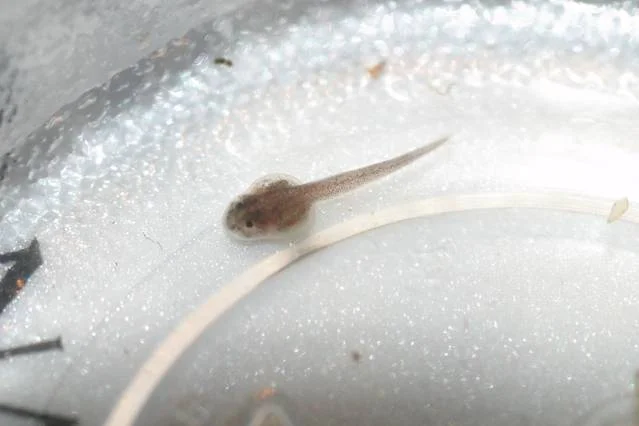








Your Custom Text Here
Ranitomeya uakarii is a close relative of R. reticulata and is part of the R. fantastica genetic group. Until it was described in 2006 as a new species it was thought to be a morph of R. duellmani. This frog can be shy, much like other R. fantastica group frogs, but will become bold over time and while actively courting.
These frogs lay between four and ten light gray eggs every other week in horizontally mounted film canisters tucked into plant leaves and give preference to canisters that open toward the rear of the enclosure. Others have reported eggs being laid under overlapping leaves or in the leaf litter. Courting is much like other fantastica group frogs with jerky movements and back stroking. One difference is that the call, a repetitive raspy buzz, of the male can be heard several feet away from the enclosure.
Care: Intermediate, small as adults and quick, sometimes shy
Groups: Yes, male heavy
Breeding: Easy, horizontal film canisters on their sides or in the leaf litter, sometimes leaf litter used exclusively
Tadpoles: No parental care after deposition, recommend pulling after deposition
Froglets: Small, springtails are typically necessary
Tips: It can be hard to find eggs. Sometimes it's best to provide plenty of deposition sites and just pull tads.
Ranitomeya uakarii is a close relative of R. reticulata and is part of the R. fantastica genetic group. Until it was described in 2006 as a new species it was thought to be a morph of R. duellmani. This frog can be shy, much like other R. fantastica group frogs, but will become bold over time and while actively courting.
These frogs lay between four and ten light gray eggs every other week in horizontally mounted film canisters tucked into plant leaves and give preference to canisters that open toward the rear of the enclosure. Others have reported eggs being laid under overlapping leaves or in the leaf litter. Courting is much like other fantastica group frogs with jerky movements and back stroking. One difference is that the call, a repetitive raspy buzz, of the male can be heard several feet away from the enclosure.
Care: Intermediate, small as adults and quick, sometimes shy
Groups: Yes, male heavy
Breeding: Easy, horizontal film canisters on their sides or in the leaf litter, sometimes leaf litter used exclusively
Tadpoles: No parental care after deposition, recommend pulling after deposition
Froglets: Small, springtails are typically necessary
Tips: It can be hard to find eggs. Sometimes it's best to provide plenty of deposition sites and just pull tads.
Tamshiyacu
The 'Tamshiyacu' frogs are part of a Understory Enterprises import and are from a different population than the frogs that were imported from Europe. The dorsal striping on these frogs tends to be narrower than their European counterparts and often doesn't connect at the nose to form a black nose dot.
Tamshiyacu
Tamshiyacu
Tahuayo
The 'Tahuayo' frogs are part of a Czech import and are from a different (more southern) population than the frogs being imported by Understory Enterprises. The dorsal striping on these frogs tend wider than their Understory Enterprises counterparts and often connects at the nose to form a black nose dot.
Tahuayo
Tahuayo
Tahuayo
Tahuayo
Tadpole after a couple weeks in the water.
Tahuayo
Newly morphed froglet